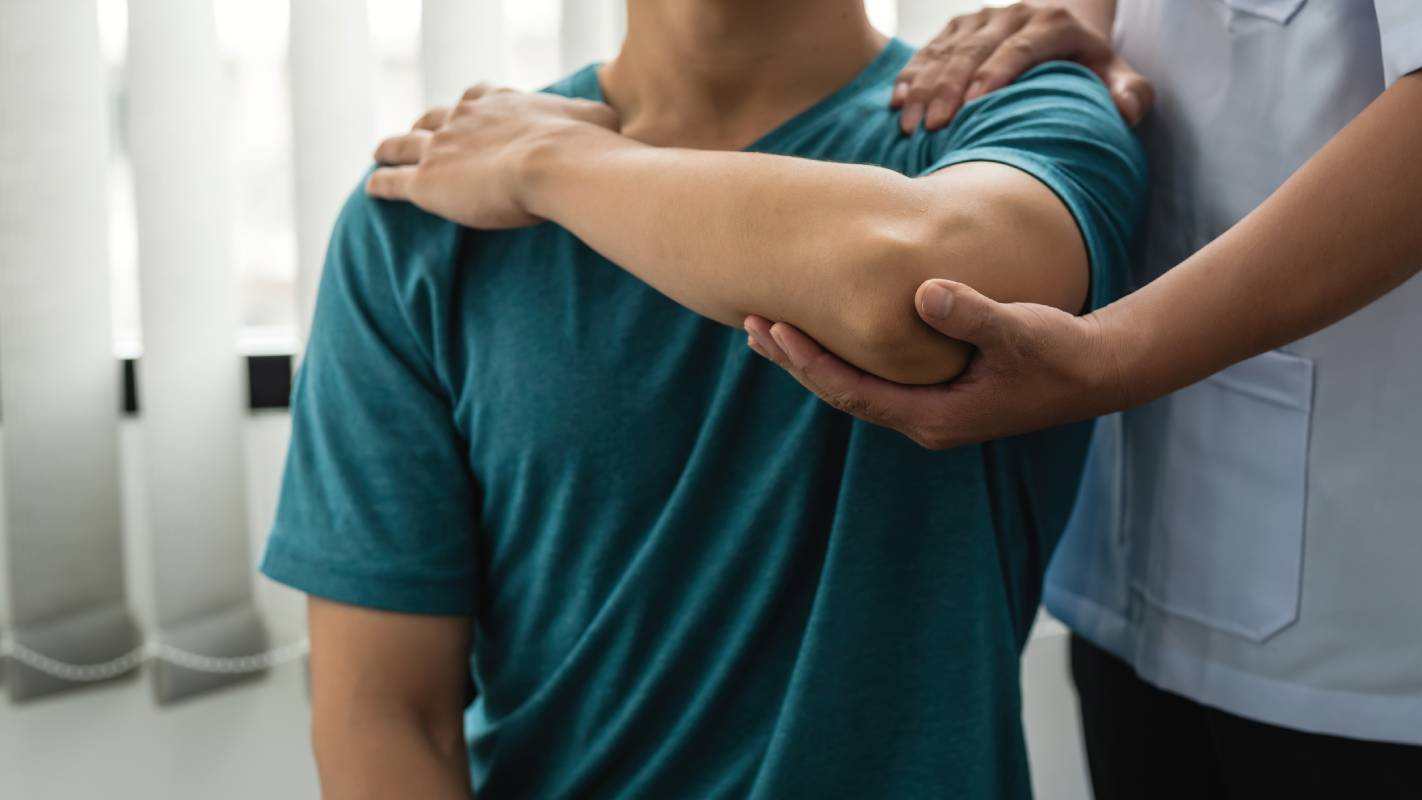Recovery after exercise is an essential element of any training program or workout routine. Athletes, coaches, and healthcare practitioners look to the recovery period between training and competition to maximize performance gains. Intense bouts of exercise can lead to dehydration, fatigue, soft tissue damage, and increased body temperature; altogether, these effects can disrupt many of the body’s physiological systems, like the nervous, cardiovascular, and immune systems (Peake, 2019). The overall goals of post-exercise recovery are to “restore homeostasis, replace fuels and fluids, repair the body’s tissues, and rest” (Peake, 2019). There are various nutritional and physical interventions that can help individuals achieve these goals, including rehydration, hydrotherapies, massage, and sleep. Joint manipulation is one of the many other techniques being discussed in the research domain of post-exercise recovery.
Joint manipulation is a manual therapy performed by chiropractors and physical therapists (PTs) that involves applying force to one’s spinal or peripheral joints to relieve restriction and improve joint function (Sears, 2021). There are several different techniques that a practitioner may use or favor. Osteopathic manipulative therapy (OMT) is a similar technique (often used to treat chronic pain) that also involves “moving and manipulating a person’s muscles and joints to help diagnose, prevent, and treat certain conditions” (Rowden, 2022). Doctors of osteopathy (DOs) are qualified to perform OMT as part of their medical training. In recent years, OMT has also garnered some discussion as a physical intervention to aid recovery after intense training or physical exertion.
A study published in the Journal of Manipulative and Physiological Therapeutics in 2021 investigated the effects of OMT on cardiovascular autonomic parameters after a rugby match (Carnevali et al., 2021). Researchers assessed measures of heart rate, heart rate variability, and mean arterial pressure in 23 male players after one session of OMT, “both 18 to 20 hours after a rugby match and in a corresponding no-match condition, in a randomized, sham-controlled, crossover study design” (Carnevali et al., 2021). Compared with the no-match condition, “signs of reduced heart rate variability and elevated mean arterial pressure and heart rate were found 18 to 20 hours after a rugby match” (Carnevali et al., 2021). Significant increases in heart rate variability and a significant reduction in mean arterial pressure were observed after OMT in both conditions. And while heart rate and heart rate variability responses to reactivity were not affected by previous match competition, they were “significantly larger after OMT compared with sham treatment” (Carnevali et al., 2021). Overall, the study suggested cardiovascular autonomic changes in rugby players post-competition, which may be indicative of “prolonged fatigue and incomplete recovery.” In these players, researchers observed that a single session of OMT was followed by favorable changes in cardiovascular autonomic parameters, suggesting that joint manipulation may be a positive part of post-exercise recovery.
Without proper recovery, athletes may experience under-recovery or even “overreaching,” which is the “buildup of training and/or training stress leading to temporary impairment of performance capacity, with (or without) psychophysiological indicators of maladaptation” (Peake, 2019). When overreaching occurs, it can take days or weeks to completely restore performance capacity. Adequate recovery, however, can allow for a greater tolerance for training and positive physiological adaptations that bolster improvements in athletic performance. Further research into joint manipulation and OMT could lead to the development of additional physical interventions for the post-exercise recovery period.
References
Carnevali, Luca, Francesco Cerritelli, Franco Guolo, and Andrea Sgoifo. “Osteopathic Manipulative Treatment and Cardiovascular Autonomic Parameters in Rugby Players: A Randomized, Sham-Controlled Trial.” Journal of Manipulative & Physiological Therapeutics 44, no. 4 (May 1, 2021): 319–29. https://doi.org/10.1016/j.jmpt.2020.09.002.
Peake, Jonathan M. “Recovery after Exercise: What Is the Current State of Play?” Current Opinion in Physiology, Exercise Physiology, 10 (August 1, 2019): 17–26. https://doi.org/10.1016/j.cophys.2019.03.007.
Rowden, Adam. “Osteopathic Manipulative Therapy: What to Know.” Medical News Today, February 28, 2022. https://www.medicalnewstoday.com/articles/osteopathic-manipulative-therapy.
Sears, Brett. “Joint Manipulation in Chiropractic and Physical Therapy.” Verywell Health, December 17, 2021. https://www.verywellhealth.com/joint-manipulation-5207019.
